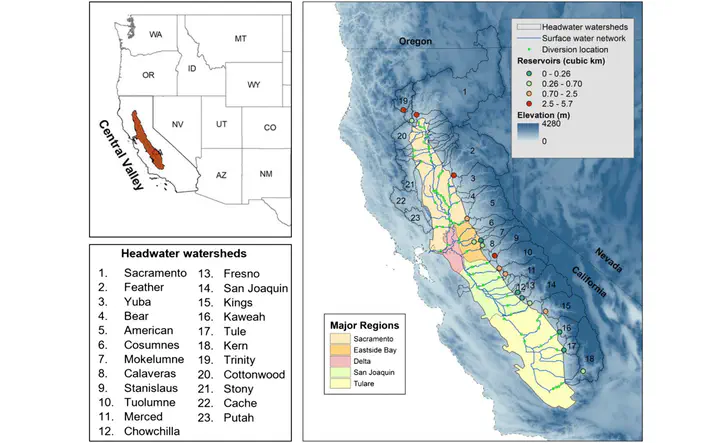Climate change impacts on groundwater storage in the Central Valley, California
Abstract
Groundwater plays a critical supporting role in agricultural production in the California Central Valley (CV). Recent prolonged droughts (notably 2007–2009 and 2012–2016) caused dramatic depletion of groundwater, indicating the susceptibility of the CV’s water supply to climate change. To assess the impact of climate change on groundwater storage in the CV, we combined integrated surface water and groundwater models with climate projections from 20 global climate models and thereby explore the vulnerability of CV groundwater under two climate scenarios RCP4.5 and RCP8.5. We found that groundwater has been declining over the past decades (3 ckm/year on average during 1950–2009). In the absence of future mitigating measures, this decline will continue, but at a higher rate due to climate change (31% and 39% increase in loss rate under RCP4.5 and RCP8.5). The greatest loss (more than 80% of the total) will occur in the semi-arid southern Tulare region. We performed computational experiments to quantify the relative contribution of future crop water use and headwater inflows to total groundwater storage change. Our results show that, without management changes, continuing declines in future groundwater storage will mainly be attributable to ongoing overuse of groundwater. However, future changes in the seasonality of streamflow into the CV, (small) changes in annual inflows, and increased crop water use in a warmer climate will lead to 40–70% more annual groundwater losses than the current annual average, up to approximately ckm/year.
